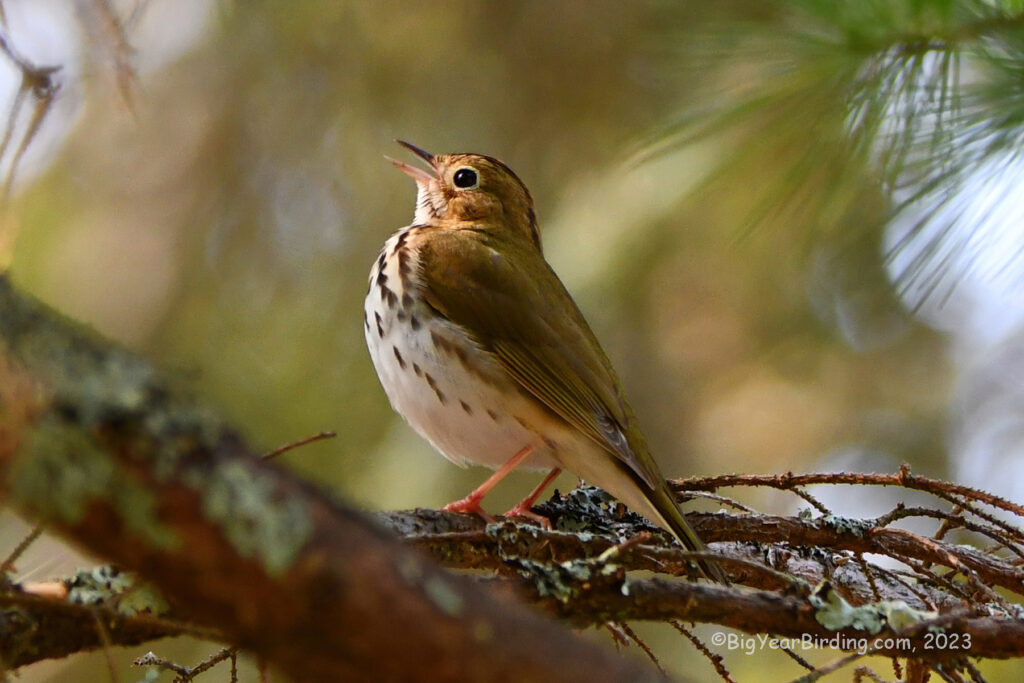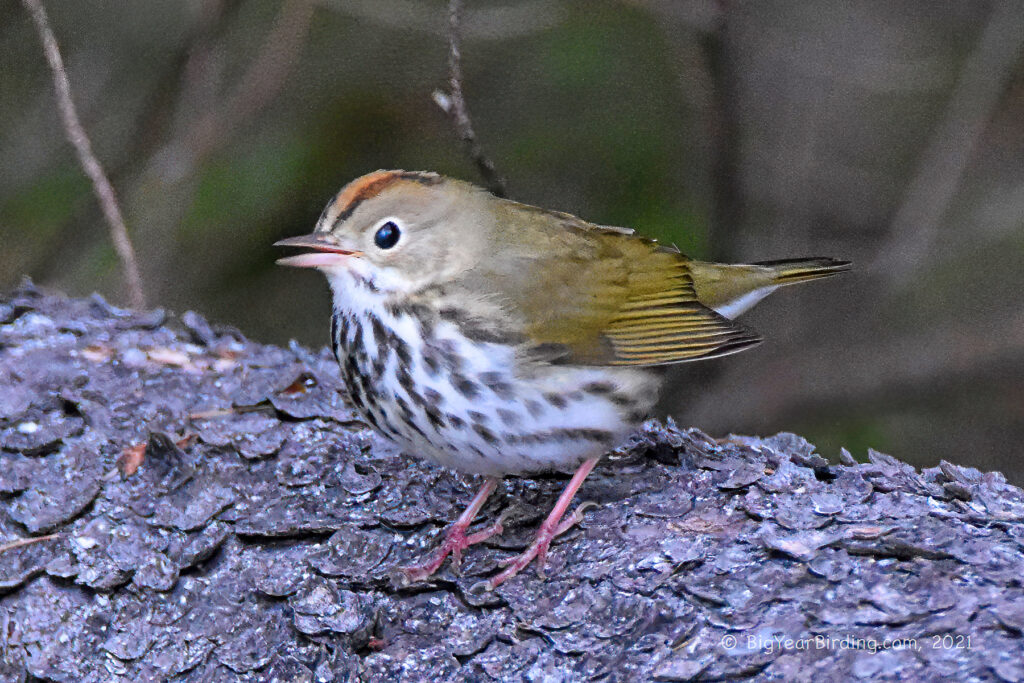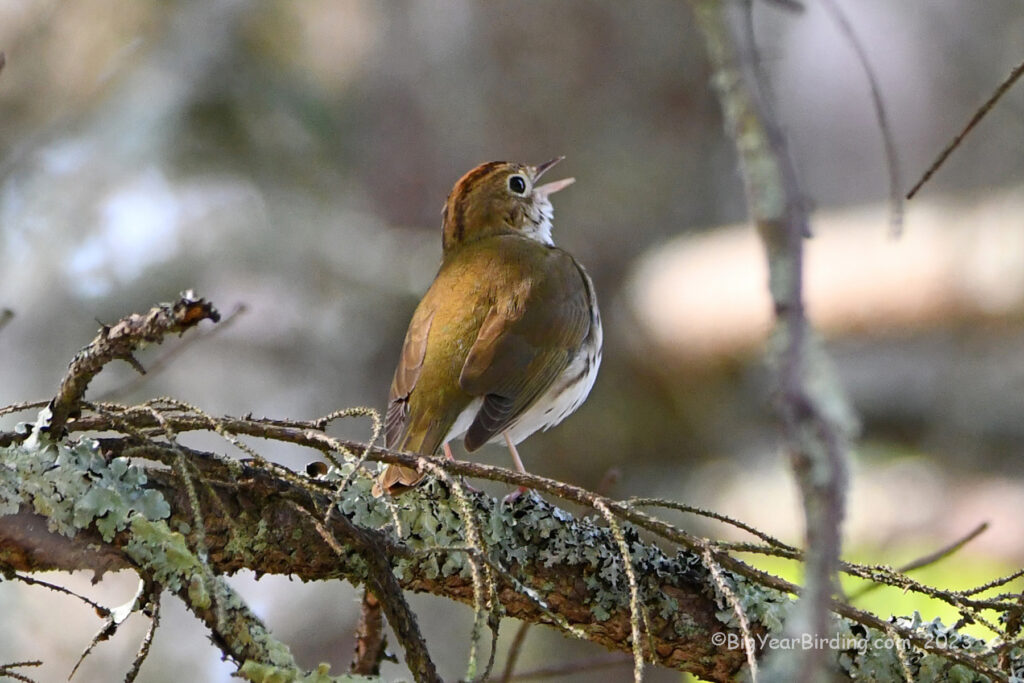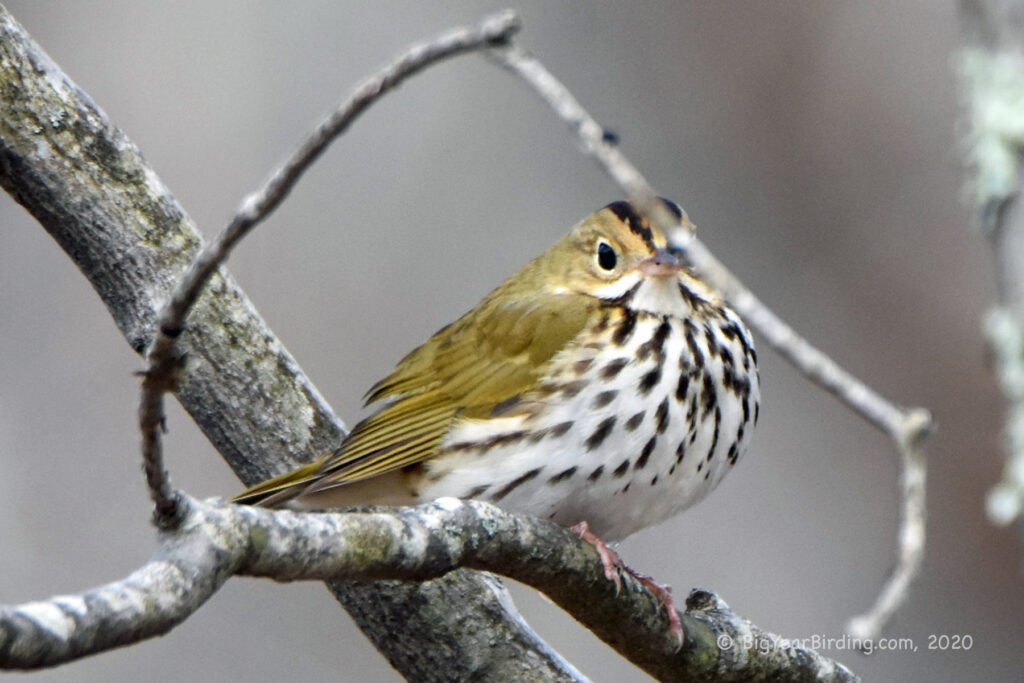
The ovenbird (Seiurus aurocapilla) is a small, migratory bird that belongs to the family Parulidae. It is roughly 5.5 inches long and weighs around 0.5 ounces. The bird’s most distinctive characteristic is the bold, striped pattern on its head, which resembles the domed roof of an old-fashioned oven, hence its name. The rest of the bird’s plumage is a dull olive-brown color, and its underparts are paler with a white belly. The ovenbird’s legs are relatively long and its bill is slightly curved, making it well-suited for its ground-dwelling habits.

The ovenbird is a migratory bird that breeds in North America and winters in Central and South America. It is commonly found in deciduous and mixed forests, where it forages for insects and other invertebrates on the forest floor. During breeding season, male ovenbirds are known for their distinctive “teacher-teacher-teacher” song, which can be heard throughout the forest. The ovenbird is a solitary bird that generally does not form flocks outside of migration season.
The ovenbird’s migration habits are relatively complex. During fall migration, some individuals will cross the Gulf of Mexico directly from the United States to wintering grounds in Central America. Others will take a longer, more coastal route down to South America. During spring migration, ovenbirds generally take a more inland route, flying over the Gulf of Mexico and then northwards into North America.

In terms of conservation, the ovenbird is considered a species of least concern by the International Union for Conservation of Nature (IUCN). However, the bird’s population has declined in some areas due to habitat loss and fragmentation, as well as exposure to pesticides and other pollutants. Conservation efforts to protect the bird’s forest habitat and limit exposure to pollutants are ongoing.
 In conclusion, the ovenbird is a small, migratory bird with distinctive markings on its head that make it easy to identify. It is found in deciduous and mixed forests across North America, and winters in Central and South America. The ovenbird’s migration habits are relatively complex, with some individuals taking a direct route over the Gulf of Mexico and others following a more coastal route. The bird is generally considered a species of least concern, but is subject to population declines due to habitat loss and exposure to pollutants.
In conclusion, the ovenbird is a small, migratory bird with distinctive markings on its head that make it easy to identify. It is found in deciduous and mixed forests across North America, and winters in Central and South America. The ovenbird’s migration habits are relatively complex, with some individuals taking a direct route over the Gulf of Mexico and others following a more coastal route. The bird is generally considered a species of least concern, but is subject to population declines due to habitat loss and exposure to pollutants.

